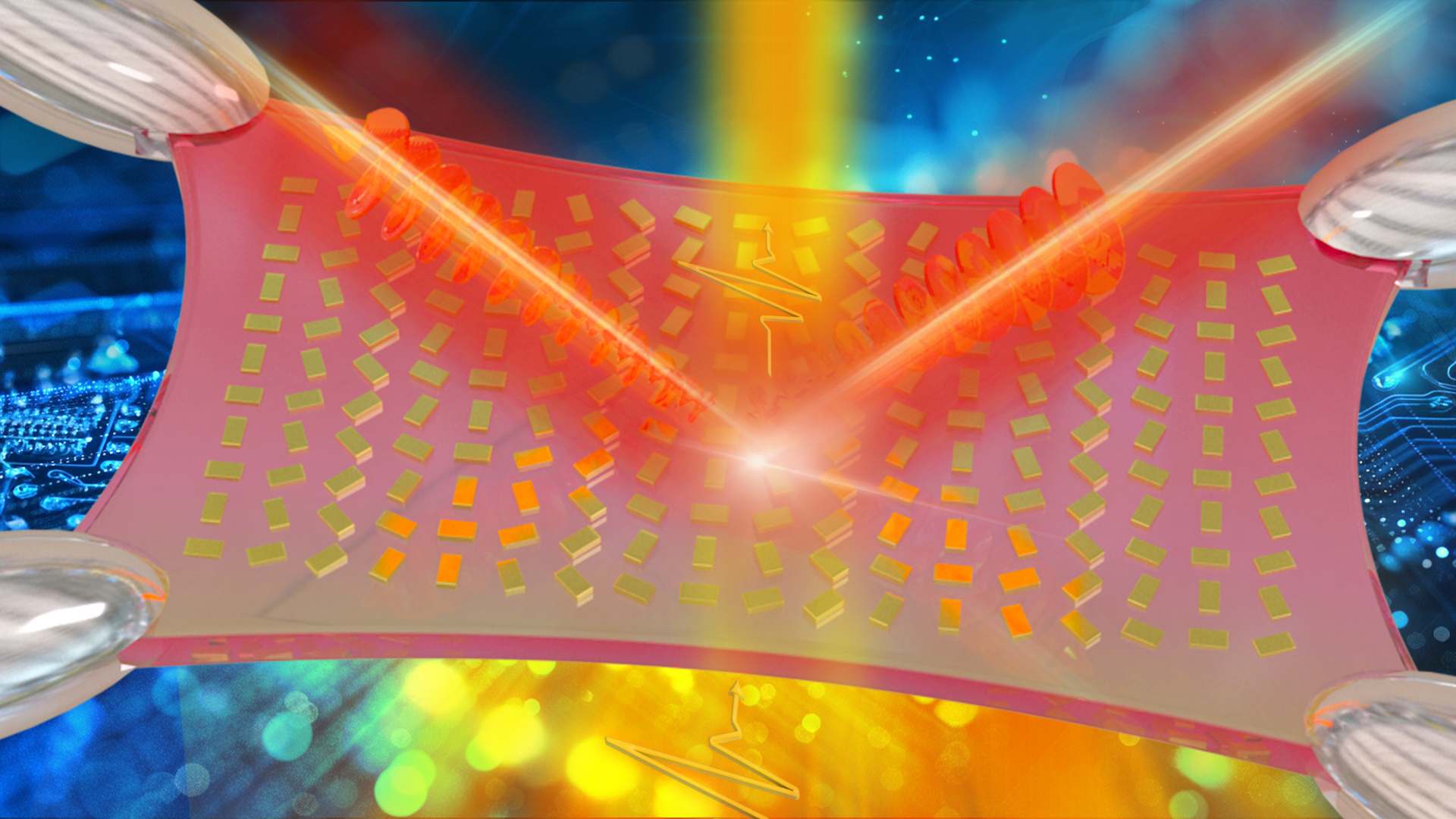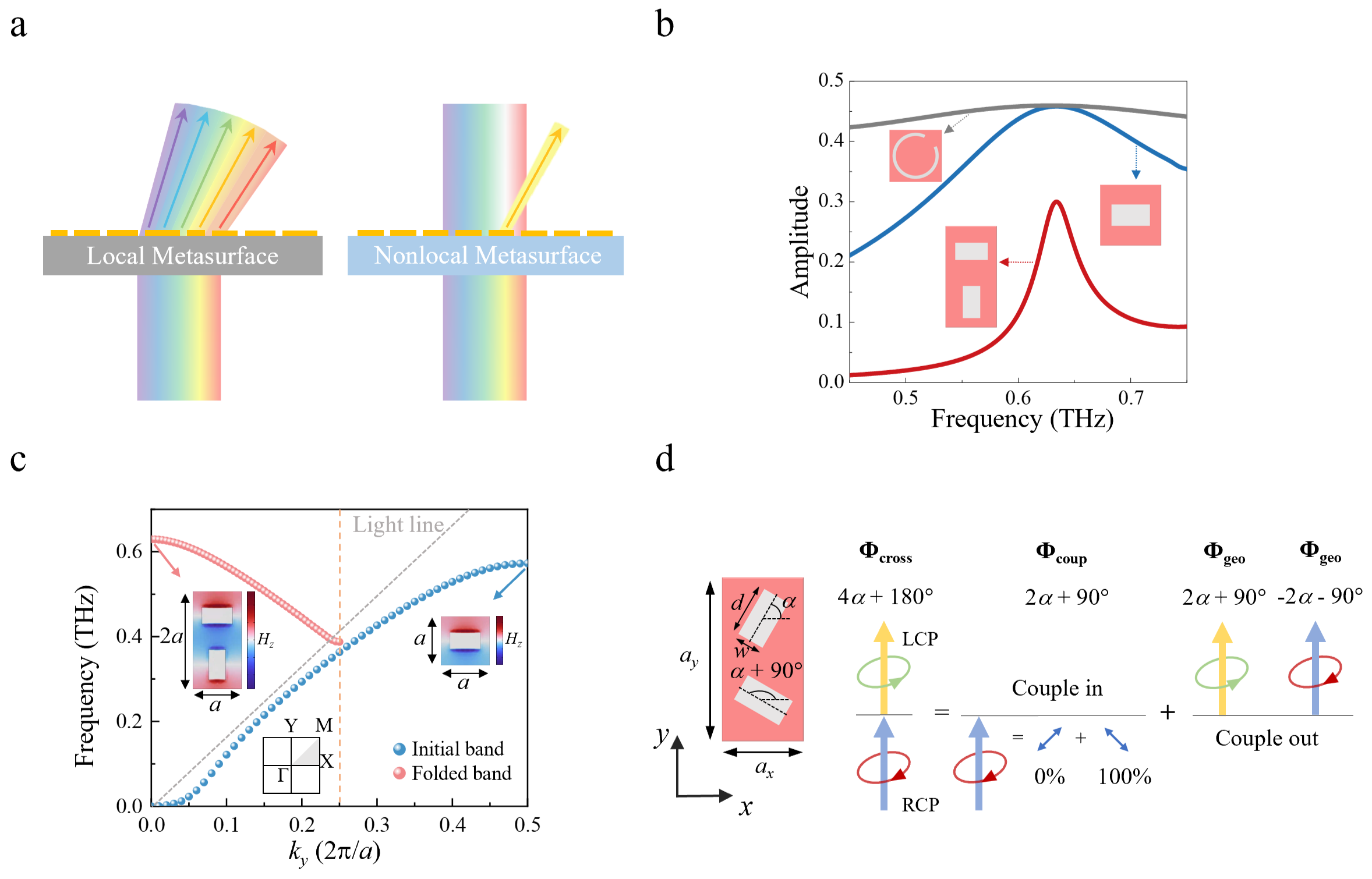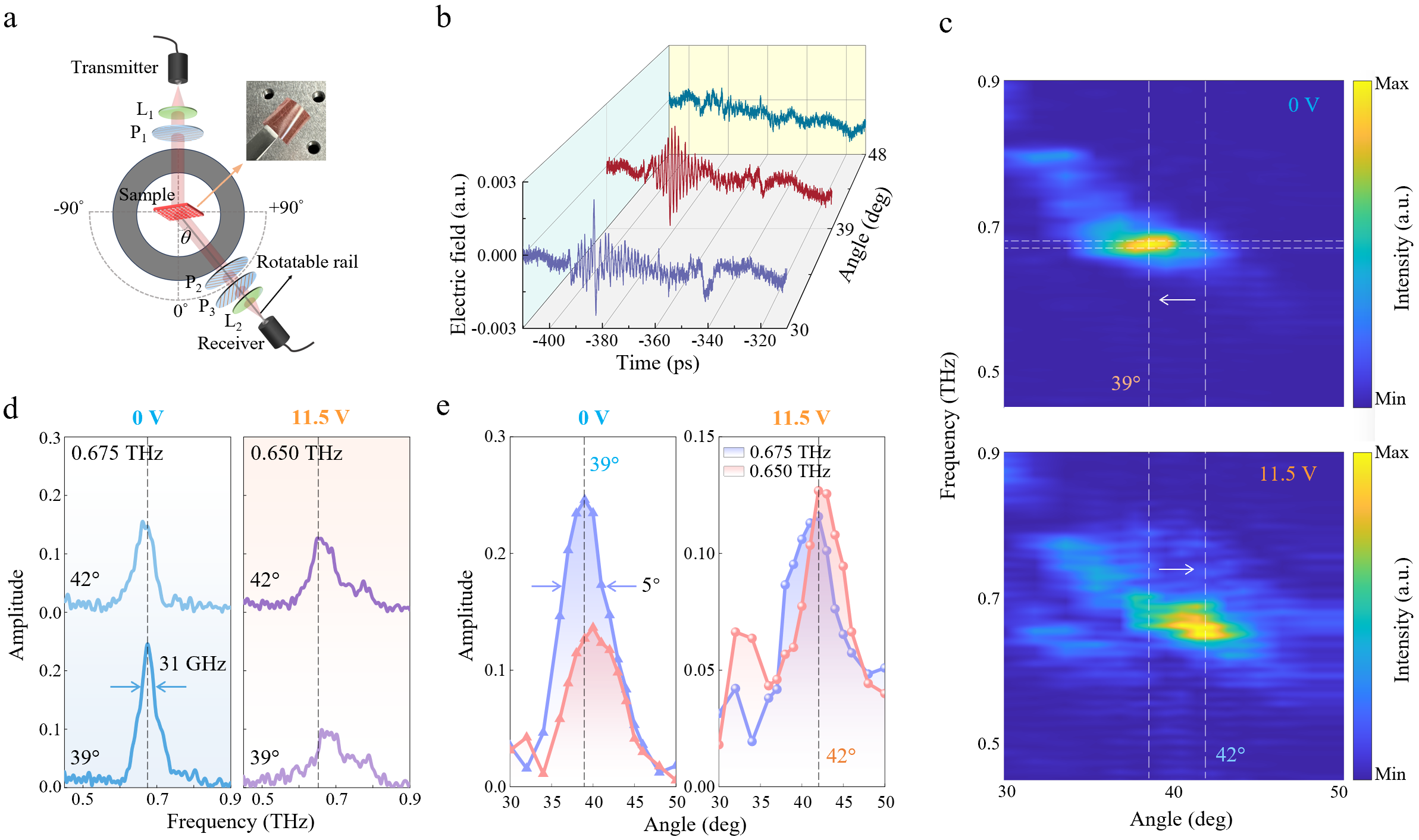Next-generation wireless communication based on terahertz (THz) waves is expected to meet the demand for higher data rates, with metasurfaces playing an important role in manipulating electromagnetic waves at higher frequencies. By introducing in-plane wave vectors through a geometric phase, electromagnetic wavefronts can be freely modulated—a key advantage for non-line-of-sight transmission in THz wireless communication.
Due to the broadband response of a geometric phase, conventional local metasurfaces have been employed to achieve wavelength- and angle-dispersive beam deflection over a broad bandwidth. However, this approach lacks selectivity in both the frequency and spatial domains, which reduces beam-shaping quality and gain. The emergence of nonlocal metasurfaces has enabled highly selective beam shaping in both spectral and spatial domains: spectral selectivity is determined by bound states in the continuum (BIC), while spatial selectivity is associated with coupling phase and high-quality-factor resonances.
Another key challenge for metasurfaces is tunability, enabling them to achieve reconfigurable functionality in response to external stimuli. In the THz regime, active beam deflection devices are particularly crucial as signal relays for non-line-of-sight communication. Previous research on active THz beam metasurfaces has primarily focused on local metasurfaces integrated with liquid crystals and phase-change materials.
An alternative approach is to use mechanically deformable materials, among which liquid crystal elastomers (LCEs) exhibit exceptional flexibility, ease of fabrication, stable performance, and low cost. As a result, LCE-based metasurfaces provide an excellent platform for developing active devices. By integrating LCEs with nonlocal metasurfaces, researchers can further enhance spectral and spatial selectivity, improve signal quality, and boost the capabilities of next-generation wireless communication systems.

A research team led by Associate Professor Longqing Cong, in collaboration with Professor Dan Luo’s team—both from the Department of Electronic and Electrical Engineering at the Southern University of Science and Technology (SUSTech), has reported a tunable THz nonlocal metasurface based on LCEs. Their study leverages the BIC mechanism and the tunability of LCEs, experimentally demonstrating a THz beam-shaping metasurface with both high spectral and spatial selectivity. This advancement paves the way for next-generation THz devices in wireless communication.
Their work, titled “Active Terahertz Nonlocal Metasurfaces With Liquid Crystal Elastomers” has been published in Laser & Photonics Reviews, a Q1 top journal in optics.
The research team implemented a nonlocal metasurface using an LCE film combined with aluminum microstructures. Compared to local metasurfaces, which are characterized by broadband dispersive spectral coverage and wide-angle spatial responses, nonlocal metasurfaces support guided-mode-derived BIC. This enables highly selective spectral and spatial beam deflection (Figures 1a-b).
A single-bar resonator exhibits guided modes below the light line at the Y point of the Brillouin zone. Through dimerization perturbation, the periodicity in real space is doubled, folding the guided mode from the Y point to the Г point in reciprocal space (Figure 1c). The resulting folded mode acts as a typical symmetry-protected BIC. Breaking the dimer symmetry leads to high-quality-factor nonlocal resonances induced by quasi-BIC. The coupling phase modulations introduced in both the input and output processes were analyzed based on selection rules derived from group theory (Figure 1d).

Figure 1. Characteristics and working principle of the nonlocal metasurface
The researchers fabricated nonlocal metasurface samples and measured time-domain data at different deflection angles using a THz time-domain spectroscopy system (Figures 2a-b). The angle- and frequency-resolved intensity spectra revealed the spatial and spectral distribution of cross-polarized radiation in the circular polarization basis under both passive and active states (Figure 2c).
It was observed that the transmitted cross-polarized component underwent beam deflection, with a relatively concentrated spectral and spatial distribution. The angle-resolved spectrum demonstrated the spectral selectivity of the nonlocal metasurface, showing a quality factor of 22 for the deflected beam at 39° (Figure 2d). Additionally, the half-power beam width was measured to be 5°, indicating excellent spatial selectivity (Figure 2e).

Figure 2. Experimental results of the active nonlocal metasurface
The nonlocal metasurface also demonstrated tunable polarization selectivity with high spectral and spatial resolution. Under left-handed circularly polarized (LCP) and right-handed circularly polarized (RCP) incidence, the coupling phase of the metasurface imparts opposite phase gradients to the RCP and LCP outputs, generating opposite in-plane wave vectors for each polarization. As a result, when a linearly polarized (LP) THz wave was incident, dual deflection channels were activated (Figure 3a).
The spectral distribution of the polarization state was numerically characterized using Stokes parameters, where S3 represents the spectral distribution of the circular polarization components. The narrowband spectral components of LCP and RCP were selectively deflected to ±39° (Figure 3b), while the non-deflected spectral components remained in the normal LP state. As shown in Figure 3c, by applying an external voltage, the polarization separation angle could be tuned to 42°, while maintaining spectral and spatial selectivity.
This polarization multiplexing and spatial demultiplexing scheme based on the LCE-integrated nonlocal metasurface, along with its tunable beam deflection capability for non-line-of-sight transmission, provides an effective solution for next-generation wireless communication.

Figure 3. Experimental characterization of polarization selectivity
Undergraduate student Shangyan Long and Ph.D. candidate Wei Zhang are co-first authors of the paper. The research was supervised by Associate Professor Longqing Cong, Professor Dan Luo, and Chair Professor Perry Ping Shum from SUSTech.
Paper link: https://onlinelibrary.wiley.com/doi/10.1002/lpor.202402167
To read all stories about SUSTech science, subscribe to the monthly SUSTech Newsletter.
Proofread ByAdrian Cremin, Yilin ZHOU
Photo ByDepartment of Electronic and Electrical Engineering